
Caring for a feral cat is an important commitment. Once you have the environment and home ready for your new companion, you need to provide adequate food and water sources. Socializing with the cat and providing training are also essential steps in the process of making a feral cat part of your family.
In this blog post, we will explore what a feral cat is, the reasons for making a feral cat, and how to go about making such a commitment. Read on to learn all you need to know about taking care of a feral cat.
What is a Feral Cat?
A feral cat is one which has reverted to a wild state from being a domestic pet. Typically, these cats live in colonies, living off of resources in their environment such as food scraps and water bowls left out for them.
Although feral cats are generally wary of people and cannot be easily socialized, they do have the ability to form close bonds with other cats in their respective colonies. The cat’s life is typically shorter than those kept as house pets, but they can still thrive in the right conditions.
In recent years, there has been an active effort by animal shelters and local governments to help care for and spay/neuter feral cats, as well as help find homes for kittens born on the streets who may eventually become domesticated pets once more.
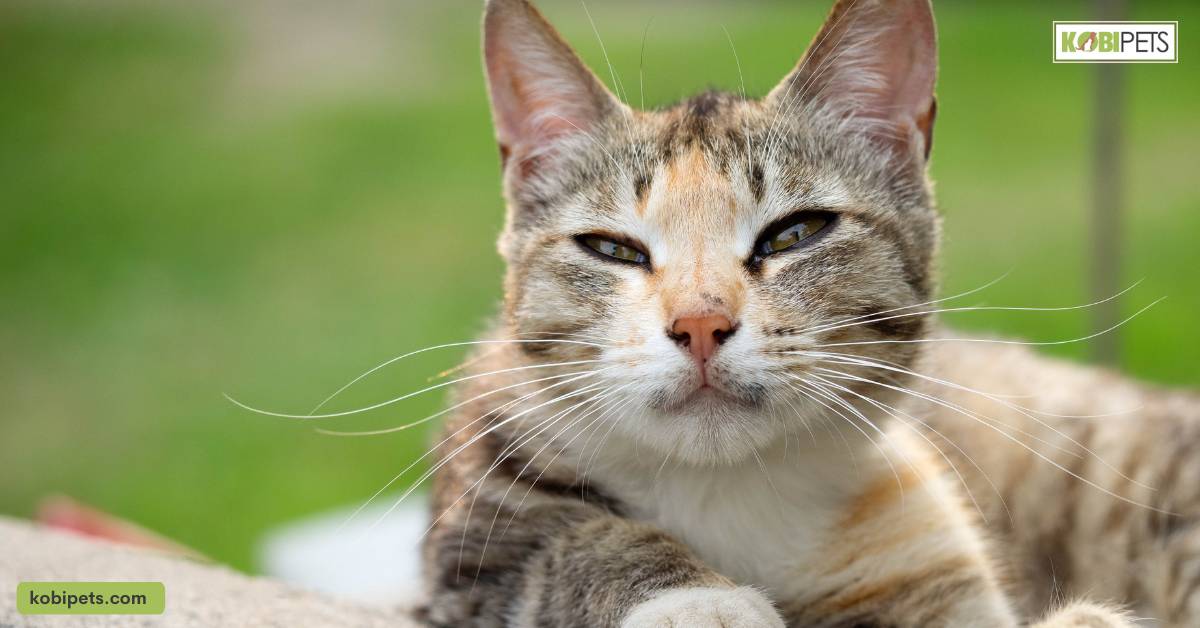
Reasons for Making a Feral Cat a House Cat
Providing a forever home to a cat who is homeless and may otherwise suffer in the outdoors can be incredibly rewarding. Making a feral cat into a beloved pet, however, is no small feat.
Taming a feral cat requires patience and understanding of their natural behavior, as well as consistent efforts to socialize them in safe environments. Understanding how best to build strong bonds with felines is key for providing them with the best care in their new home, as well as ensuring that everyone in the family – including the new pet – is happy and comfortable.
- Provide a Loving Home: Feral cats can be loving and loyal companions if they are given the opportunity to form a bond with their humans. Taking in a feral cat provides them with essential food, shelter, medical care, and the chance to experience love and affection which they may not receive on the streets.
- Reduce Overpopulation: Feral cats reproduce at an alarming rate, and this can lead to overpopulation. Spaying or neutering the cat you adopt helps reduce the number of feral cats living in your area.
- Increase Quality of Life: By providing a safe environment, adequate food, and medical care (including parasite control), you can increase the quality of life for a feral cat who might otherwise be struggling to survive on the streets.
- Save Lives: When you choose to take in a feral cat, you’re not only helping that individual animal but also ensuring that fewer cats are living on the streets and at risk of harm or death.

Reasons for Making a Feral Cat a House Cat
Steps in Taming a Feral Cat
Taming a feral cat can seem like a daunting task for many. It is important, however, to be patient and consistent when going through the taming process. Generally, this includes allowing the cats to observe you from afar at first, followed by approaching them in an unintimidating and low-stress manner.
After these steps, it typically takes time and patience as contact and intense interactions can occur slowly over days or even weeks until the cats become comfortable with human company. Once a relationship is established, then long-term commitment to proper care and nutrition can help further tame the cats.
1. Establish a routine
Set out food and water dishes at the same time every day, and begin visits to the colony regularly as often as possible.
2. Familiarize yourself with the cat
Spend some time getting to know each of the cats in the colony; this will help you identify which of them may be more amenable to being tamed.
3. Introduce yourself
Gently and slowly approach the cat of your choice, keeping your body language open and non-threatening. Speak in a calm voice and allow the cat to come to you; do not reach out or attempt to pet it until it is comfortable with your presence.
4. Allow the cat to explore
Place a box or bed in a quiet area of your home and allow the cat to explore it at his/her own pace. Provide comfortable bedding, toys, and treats for further encouragement.
5. Build trust
Spend time sitting quietly with the cat, offering reassuring words as well as treats. Pet the cat when it allows you to and gradually increase your physical contact; this will help build trust over time.
6. Create a safe environment
Provide scratching posts, climbing trees, and hiding spots for the cat so that it can feel safe in its new home.
7. Establish boundaries
If the cat behaves in an unacceptable manner, calmly and gently explain why the behavior is not okay.
8. Provide medical care
Take the cat to see a vet for necessary vaccinations, spaying/neutering, parasite control, and any other health issues which may be present.
9. Continue socializing
Spend time with the cat often and keep the bond strong; this will help it to continue socializing even after it has been domesticated.
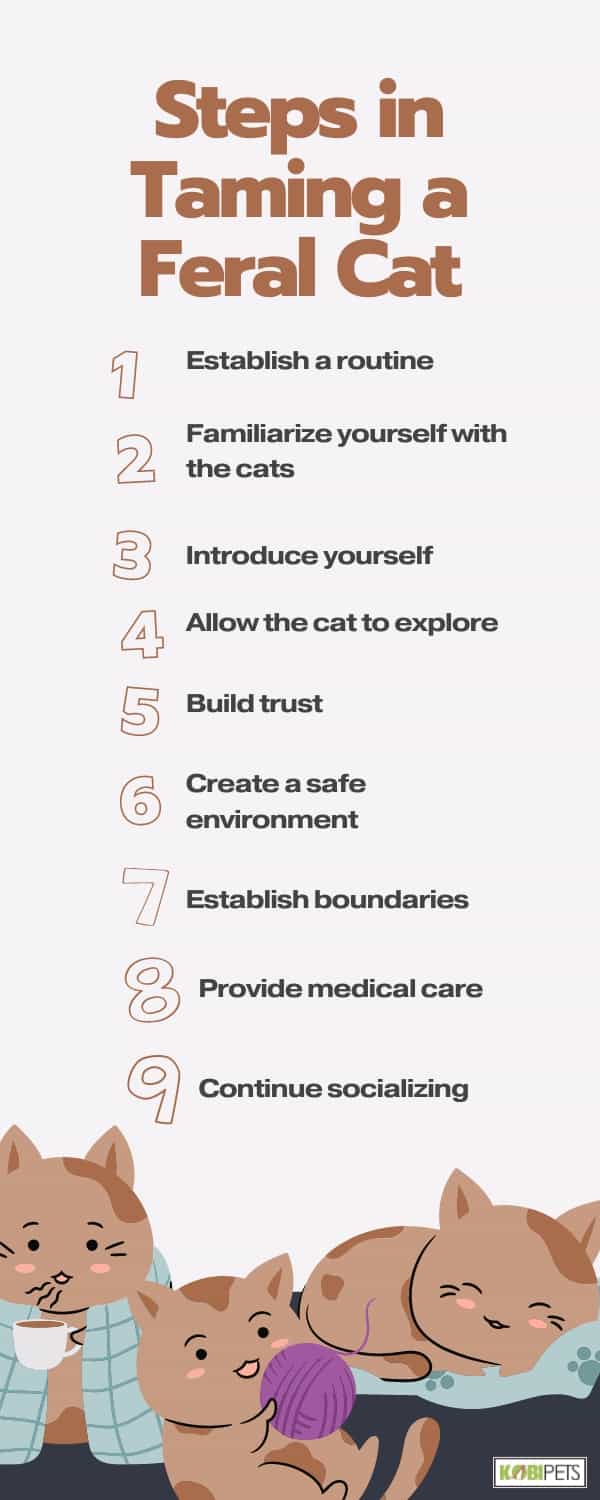
Steps in Taming a Feral Cat
The Process of Making a Feral Cat
Preparing the Environment and Home for the Feral Cat
It is important to take time in creating a safe and comfortable environment for the feral cat prior to bringing it home. This includes prepping the house by blocking off any areas that you do not want the cat to explore, such as certain rooms or cabinets.
Additionally, make sure the outdoor area will remain secure while allowing ample outdoor space and access to shelter. It is recommended that you place shelter, food, and water dishes outside of your house before introducing the feral cat into its new home.
This will give it an opportunity to become accustomed to its new environment without feeling threatened by unfamiliar people right away. Taking this extra step can help to drastically reduce stress levels in both you and the cat.
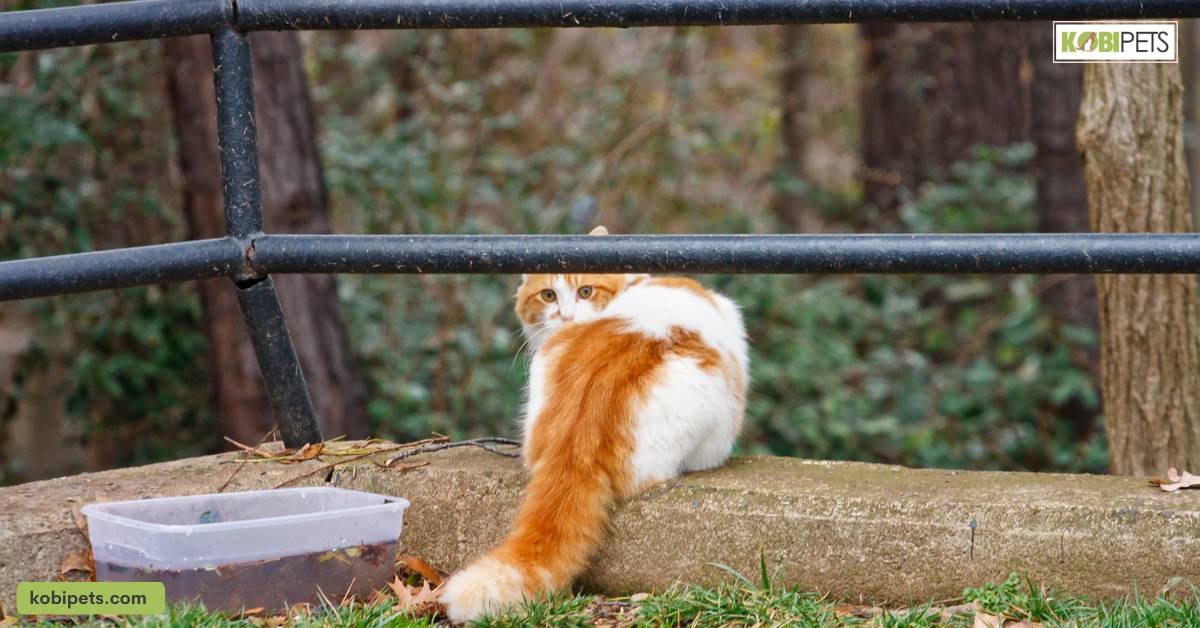
Providing Food and Water Sources for the Feral Cat
Providing food and water sources for feral cats is an important part of the process of making a feral cat. This can involve leaving out bowls of food and water outdoors or placing a shelter near where the cats will easily find it.
Shelters should be semi-enclosed, elevated off the ground, lined with straw to provide insulation from both hot and cold temperatures and debris, and should face away from direct wind or sun exposure.
Additionally, providing clean food dishes on a routine basis is necessary for establishing trust between the cats and humans as well as keeping them in better health; this includes setting out only as much food as one expects them to eat in 24 hours and avoiding certain dangerous foods such as citrus fruits and onions.
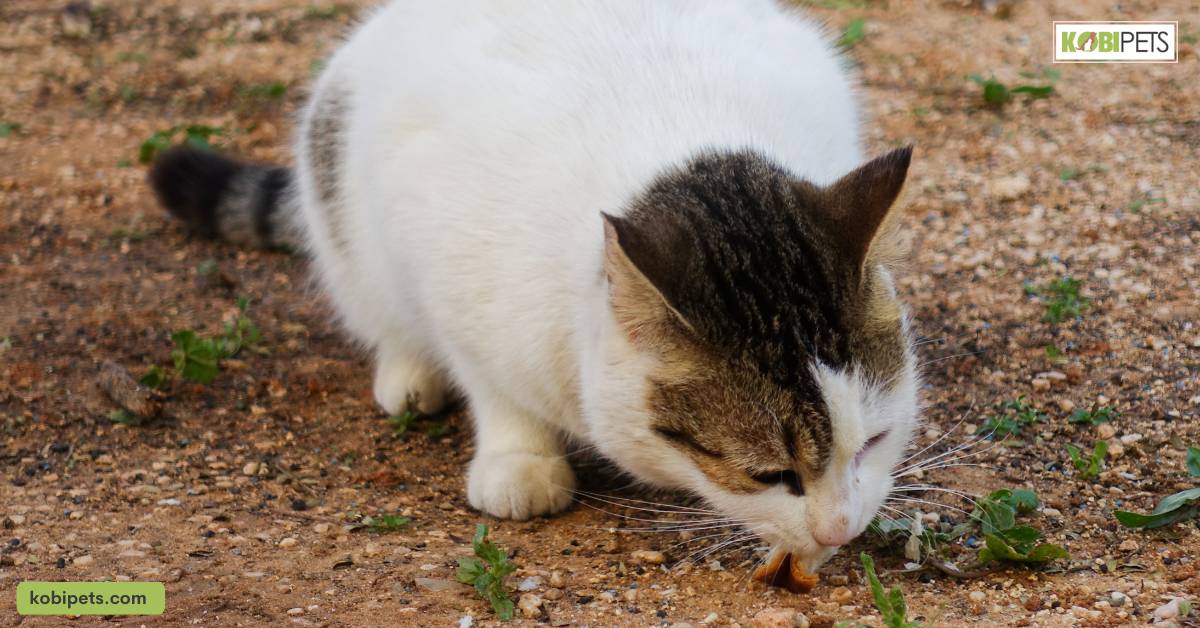
Socializing and Training the Feral Cat
Socializing a feral cat is an important, yet complex, task. First, it is essential to plan a gradual, step-by-step approach and be prepared for setbacks along the way. There are numerous methods of socialization, such as providing a safe space away from other pets and children; introducing the cat to new objects and people at a slow pace; and teaching basic commands like sit or stay.
Training also helps with socialization. For example, teaching the cat what behaviors are acceptable and unpleasant helps to reduce unwanted actions like hissing or scratching. However, training must be done in a gentle manner with positive reinforcement; otherwise, the process can be stressful for both parties involved.
It is important to remember that socializing and training a feral cat takes patience — but with perseverance, success is attainable!
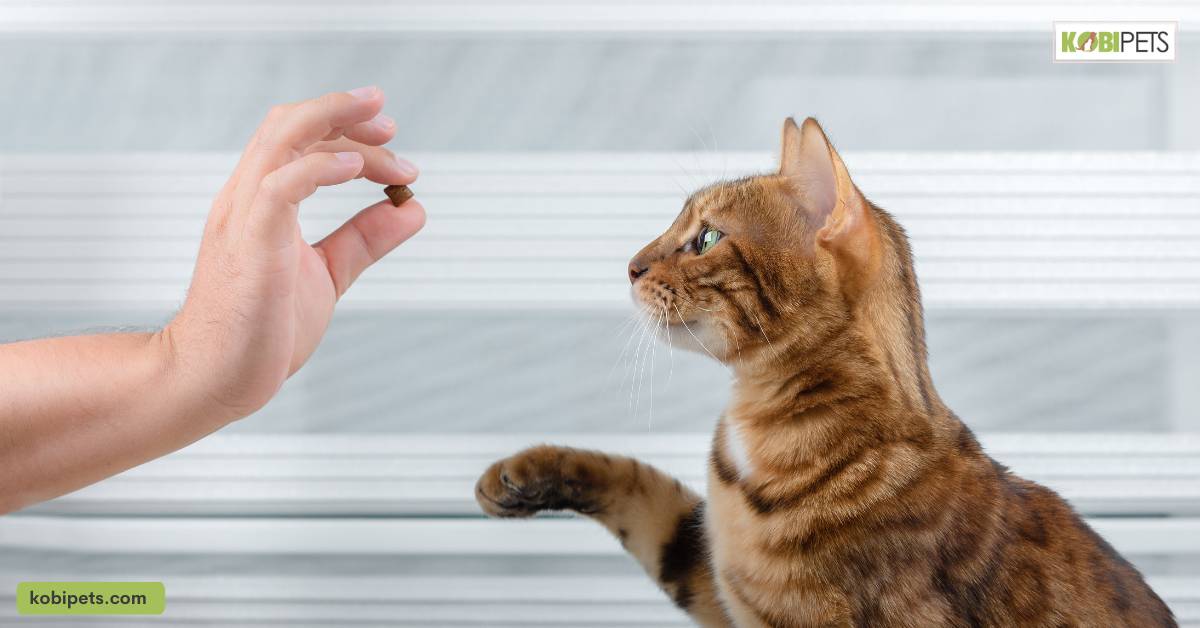
In Conclusion
Ultimately, taking in a feral cat is a big responsibility. It requires patience, understanding, and commitment to create an environment that is safe and conducive to the cat’s well-being. But with dedication and proper care, providing a forever home for a feral cat can be incredibly rewarding.
Not only will you give them the chance to experience love and affection, but you will also be helping to reduce overpopulation, improve their quality of life and save a precious life.






